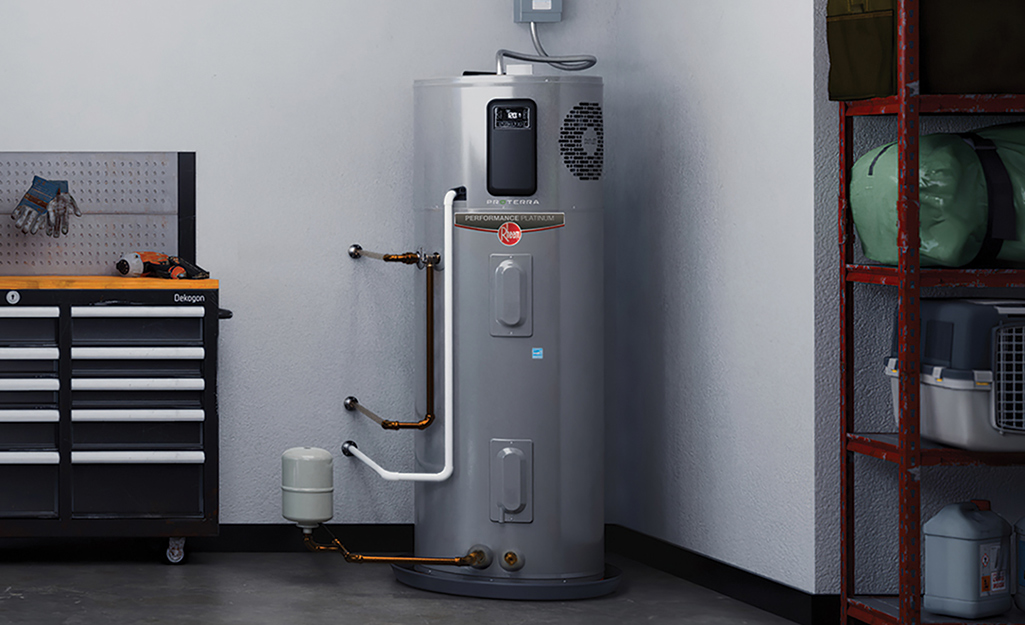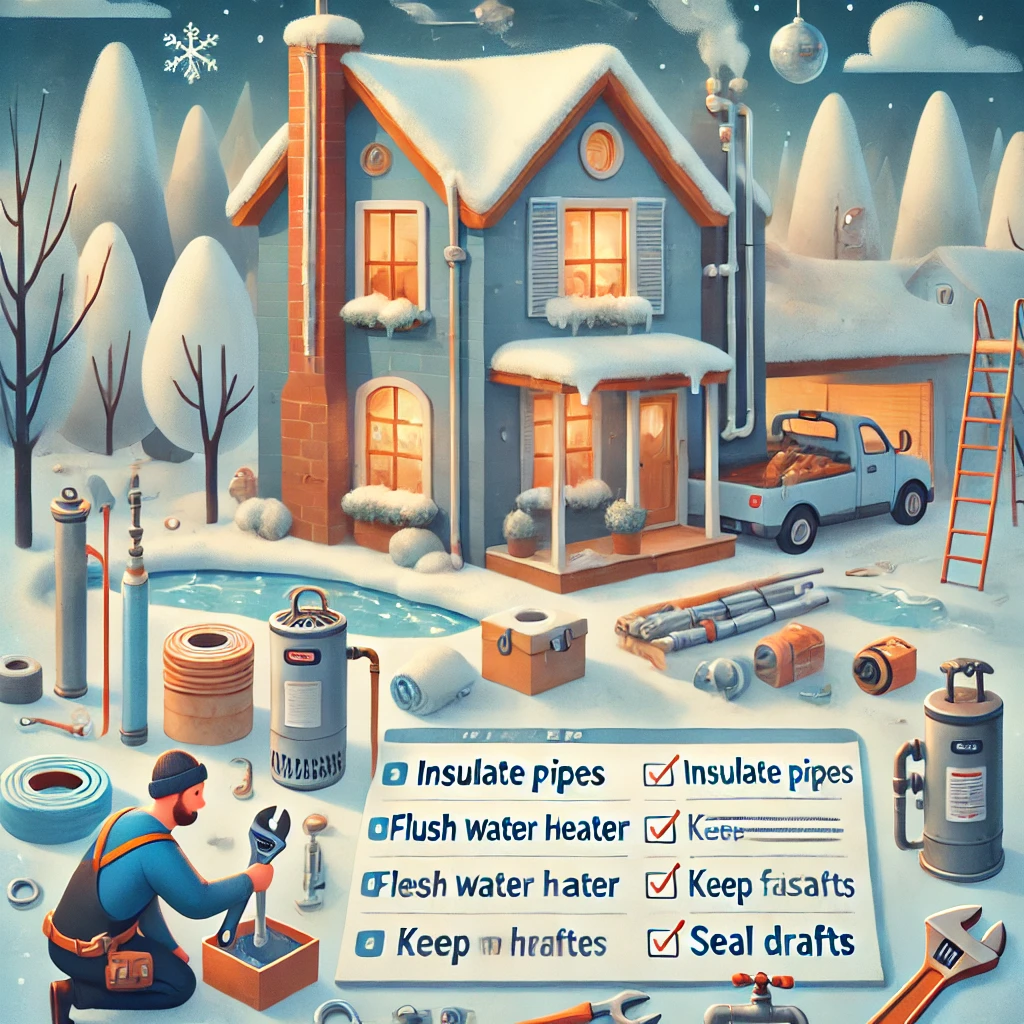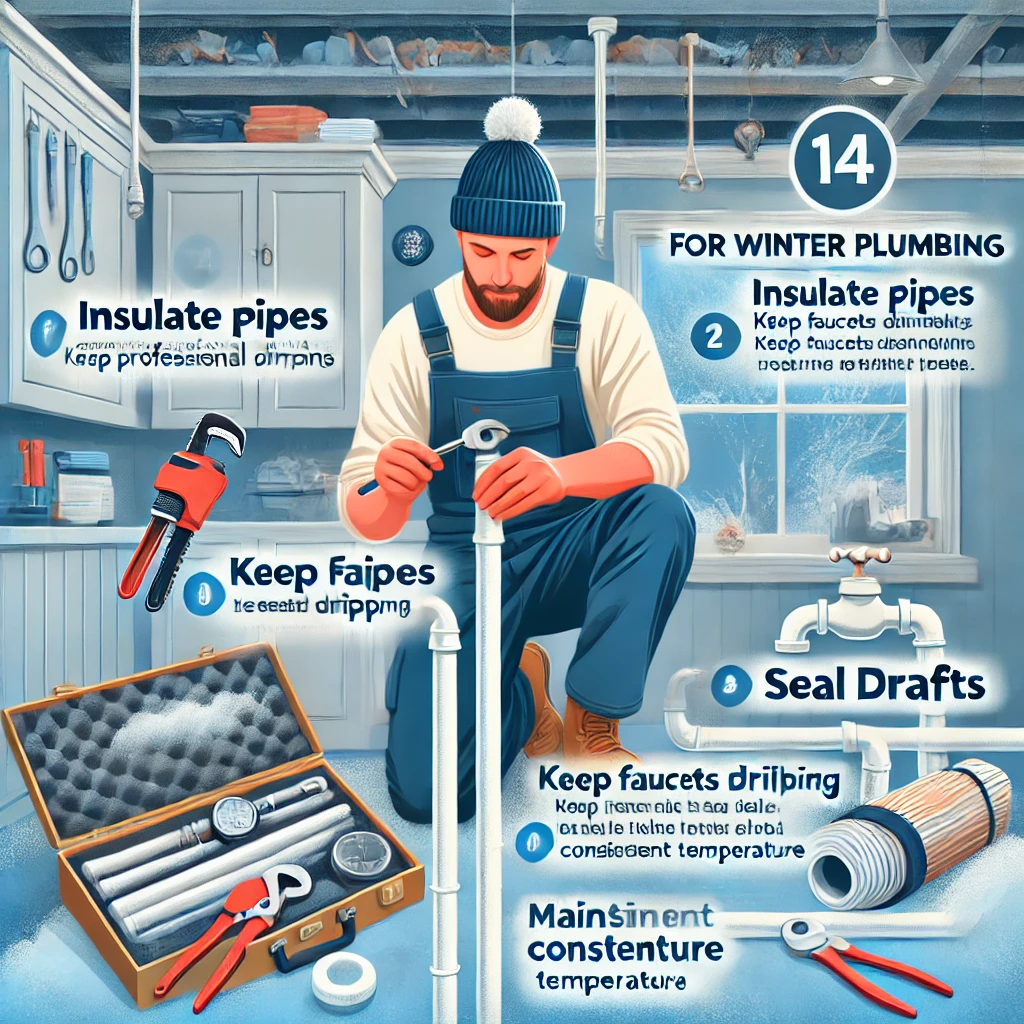As winter sets in and temperatures drop, the risk of frozen pipes becomes a major concern for homeowners. Frozen pipes can lead to costly repairs, water damage, and disruption to your daily life. However, with the right precautions, you can prevent this common winter problem and keep your plumbing system running smoothly throughout the season. In this guide, we’ll explore why pipes freeze, the signs of freezing, and provide professional tips to prevent frozen pipes in your home.
1. Why Do Pipes Freeze in Winter?
Pipes freeze when the water inside them drops below freezing temperatures (32°F or 0°C). As the water freezes, it expands, putting immense pressure on the pipe walls. This can cause the pipe to crack or burst, leading to significant water damage when the ice melts and water flows again.
Certain factors increase the likelihood of frozen pipes:
- Poor Insulation: Pipes located in uninsulated or poorly insulated areas, such as basements, attics, or garages, are at higher risk.
- Outdoor Exposure: Pipes that run along exterior walls or are exposed to the outdoors are more susceptible to freezing.
- Sudden Drops in Temperature: Rapid temperature changes can catch homeowners off guard, leaving pipes vulnerable.
- Reduced Water Flow: Standing water in pipes during cold weather is more likely to freeze, especially if faucets aren’t used regularly.
2. Signs Your Pipes May Be at Risk of Freezing
Identifying the signs of potential freezing early can help you act before it’s too late. Watch for these warning signs:
- Frost on Pipes: Visible frost or ice buildup on exposed pipes is a clear sign of freezing conditions.
- No Water Flow: If water isn’t coming out of the faucet, it may indicate a frozen section of the pipe.
- Unusual Sounds: Bubbling, gurgling, or clanking noises in your plumbing system may signal that ice is forming inside the pipes.
- Cold Walls or Floors: If a pipe is located behind a wall or under the floor, the surrounding area may feel unusually cold.
- Unpleasant Odors: A strange smell coming from a drain or faucet could indicate a blockage caused by ice.
3. DIY Tips for Preventing Frozen Pipes
Taking preventive measures before temperatures plummet is the best way to avoid frozen pipes. Here are some effective strategies to protect your plumbing system:
A. Insulate Your Pipes
Insulating your pipes is one of the simplest and most effective ways to prevent freezing. Use foam pipe insulation or fiberglass wrap to cover exposed pipes, especially those in unheated areas like basements, attics, or crawl spaces.
- Tip: Don’t forget outdoor pipes and hose bibs. Insulating these areas can significantly reduce the risk of freezing.
B. Keep Faucets Dripping
Allowing a small trickle of water to flow through faucets can prevent pipes from freezing. Moving water is less likely to freeze than standing water.
- Tip: Open both the hot and cold water taps slightly to ensure both supply lines are protected.
C. Seal Drafts and Cracks
Cold air can seep into your home through gaps around windows, doors, and vents, increasing the risk of frozen pipes. Use caulking or weather stripping to seal drafts and keep the temperature stable.
- Tip: Pay special attention to areas near pipes, such as under sinks or along exterior walls.
D. Open Cabinet Doors
In areas where pipes are located inside cabinets, such as under the kitchen sink, open the cabinet doors to allow warm air to circulate around the pipes.
- Tip: Make sure any harmful cleaning chemicals stored in these cabinets are out of reach of children or pets.
E. Disconnect Outdoor Hoses
Water left in garden hoses can freeze and expand, potentially causing outdoor faucets or pipes to burst. Disconnect and store hoses indoors during the winter.
- Tip: Install insulated faucet covers on outdoor spigots for added protection.
F. Maintain a Consistent Temperature
Keep your thermostat set to the same temperature during the day and night to prevent drastic temperature drops. Avoid setting it below 55°F (13°C), even if you’re leaving the house for an extended period.
- Tip: If you’re away for a long time, consider draining your water system to eliminate the risk of frozen pipes.
G. Install Heat Tape or Heating Cables
For pipes that are particularly vulnerable to freezing, consider installing heat tape or heating cables. These devices provide controlled heat to keep pipes warm.
- Tip: Follow manufacturer instructions carefully to avoid potential fire hazards.
4. When Pipes Are at Risk: What to Do
Even with precautions, pipes may still freeze during extreme weather. If you suspect a pipe is freezing or frozen, take immediate action to minimize damage:
A. Locate the Frozen Section
Check visible pipes for frost or ice buildup. If no water is flowing from a specific faucet, the frozen section is likely in the supply line connected to it.
B. Apply Heat to the Pipe
Gradually warm the frozen section using a hairdryer, heating pad, or space heater. Start from the faucet and work your way toward the frozen area to allow water to flow out as the ice melts.
- Tip: Avoid using open flames or high-heat devices like blowtorches, as they can damage the pipe or create a fire hazard.
C. Turn on the Faucet
Leave the faucet open while thawing the pipe. This allows water to flow out as the ice melts and helps relieve pressure in the pipe.
D. Check for Leaks
Once the pipe is thawed, inspect it for cracks or leaks. If you notice any damage, turn off the water supply and call a professional plumber immediately.
5. When to Call a Professional Plumber
While many preventive measures and minor issues can be handled on your own, some situations require professional expertise. Call a plumber if:
- You can’t locate the frozen section of the pipe.
- Pipes have burst or are leaking.
- Multiple pipes or fixtures are frozen.
- You’re unsure how to properly thaw a pipe without causing damage.
A licensed plumber can quickly assess the situation and implement solutions to minimize damage and restore your plumbing system.
6. Long-Term Strategies for Preventing Frozen Pipes
For a more permanent solution to winter plumbing issues, consider these long-term upgrades:
- Pipe Relocation: Move pipes from unheated areas to more insulated spaces within the home.
- Improved Insulation: Upgrade the insulation in your home, especially in basements, attics, and crawl spaces.
- Smart Thermostats: Install a smart thermostat to monitor and maintain consistent indoor temperatures during cold weather.
Conclusion
Frozen pipes are a common winter plumbing problem, but they’re largely preventable with the right precautions. By insulating your pipes, keeping faucets dripping, and maintaining a warm indoor temperature, you can reduce the risk of freezing and protect your home from costly damage. For persistent issues or burst pipes, don’t hesitate to call a professional plumber to ensure your system is restored safely and effectively.
Take action now to winterize your plumbing and enjoy peace of mind throughout the colder months!






Leave a Reply